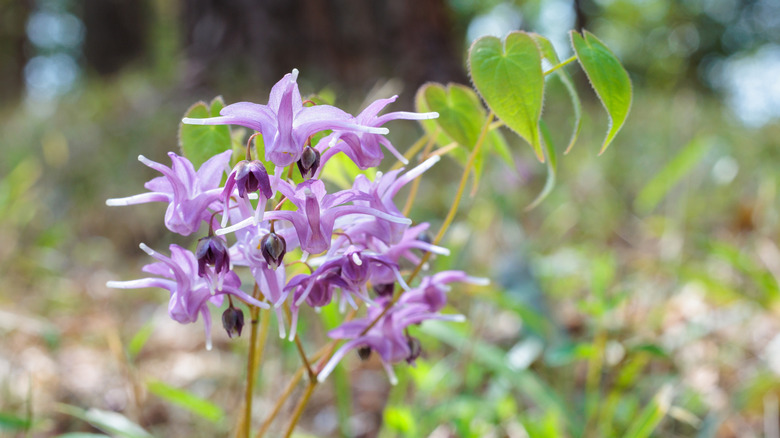If You Want To Cover Up Ugly Tree Roots, Try Growing This Pink Ground Cover
Nothing disrupts a tidy yard like a mess of exposed tree roots, but epimedium (Epimedium grandiflorum) offers a beautiful solution. Also known as barrenwort, this shade-loving ground cover spreads gently across the soil, filling in bare spots with heart-shaped leaves and soft pink flowers that bloom in early spring. It forms a low, tidy carpet with minimal upkeep and grows well even in tough spots like dry soil around tree roots.
This adaptable plant grows best in a variety of well-drained soils. Once established, it tolerates dry conditions with ease, making it ideal for shaded walkways and areas where grass won't grow. Most varieties remain compact, typically 8 to 12 inches tall and 12 to 36 inches wide, making them easy to manage on slopes or in tight spots, or as ground cover under fruit trees naturally. They grow well and can survive the winter in USDA Hardiness Zones 4 through 8, returning each spring with minimal care thanks to their strong cold tolerance.
Epimedium brings year-round color to the landscape. Its foliage starts bronze in spring, turns green in summer, and often takes on red tones as temperatures drop. These seasonal shifts add texture and interest, making this ground cover as visually appealing as it is practical. Its spring flowers may also attract butterflies and other pollinators, making it a valuable addition to plants in a shade garden.
Common issues that may affect epimedium
Although epimedium is a hardy ground cover, it isn't entirely immune to pests and viruses. One common pest to look out for is the vine weevil. While adult weevils mostly leave small notches along the edges of the leaves, their larvae pose a bigger threat. These root-feeding larvae live underground and feed on epimedium's roots. This can cause young or container-grown plants to weaken or die back, especially if the infestation goes unnoticed.
Viral infections, while less frequent, are also something to be aware of. Tobacco rattle virus is known to affect epimedium and often appears as yellow ring spots, mottling, or distortion, which may be introduced through plants that were already affected. While the virus doesn't always kill the plant, it can reduce vigor and lead to irregular growth patterns and lines across the leaves.
Another potential issue is carnation ringspot virus, which was recently identified in epimedium plants by researchers from the Department of Plant Pathology at the University of Minnesota. The virus caused symptoms like chlorotic ringspots, heavy leaf mottling, and curling at the edges. Unlike the tobacco rattle virus, the signs of CRSV are often more dramatic and easier to spot. If your epimedium shows these symptoms, it's best to remove the affected parts and avoid using infected tools around other plants. While these problems aren't widespread, it helps to recognize them early and take steps to protect your epimedium.

